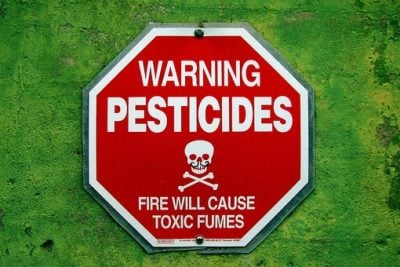New Report: More Than 200 Million Pounds of Pesticides in U.S. Are Applied to Crops Grown to Feed Animals on Factory Farms
Report Exposes Toxic Cost of Industrial Agriculture to Endangered Species

All Global Research articles can be read in 51 languages by activating the “Translate Website” drop down menu on the top banner of our home page (Desktop version).
To receive Global Research’s Daily Newsletter (selected articles), click here.
Visit and follow us on Instagram at @globalresearch_crg.
***
Hundreds of millions of pounds of toxic pesticides used in the United States are applied to corn and soy crops that are grown to feed factory farmed animals, according to a new report, Collateral Damage, released today by World Animal Protection, US and the Center for Biological Diversity.
The toxic chemicals imperil hundreds of species of already threatened or endangered birds, mammals, insects and amphibians, putting species and biodiversity at extreme risk. The full report can be found here.
An estimated 235 million pounds of herbicides and insecticides were applied to feed crops for factory-farmed animals in the United States in 2018, the most recent year for which complete information is available, according to the report’s findings.
Collateral Damage reveals that consumers may be having a greater impact on the health of animals and the planet from their meat and dairy choices than they realize.
“It is critical that we understand the full environmental footprint of animal products so people can understand the true impacts of their food choices,” said Cameron Harsh, programs director at World Animal Protection US. “Meat and dairy companies consume resources, such as feed crops and the land used to grow them, at unsustainable rates to create calorie-dense diets for the billions of farmed animals raised in the U.S. each year. Wild animals and ecosystems are paying the price.”
Among the report’s findings are the threats to protected species from the two most-used pesticides in this country — glyphosate and atrazine.
Glyphosate, roughly 100 million pounds of which were applied to feed crops in 2018, is likely to harm or kill 93% of plants and animals protected under the Endangered Species Act, according to federal regulators. Atrazine, the next most-applied chemical on U.S. feed crops, is banned in 35 countries and likely to harm or kill more than 1,000 protected species.
Expanding production of intensive corn and soy for farmed animal feed is also associated with converting native, biologically diverse grasslands to single-crop production and with polluting waterways, adding further threats to wild species.
“Endangered species like monarch butterflies, San Joaquin kit foxes and whooping cranes are threatened by these pesticides every day just to fuel the cruel and unsustainable factory farm industry,” said Lori Ann Burd, environmental health director at the Center for Biological Diversity. “This is outrageous and should be a call to action for everyone who cares about animals.”
World Animal Protection, US and the Center for Biological Diversity are calling on individuals and institutions to reduce their consumption of meat and dairy, opting for diets and menus that prioritize plant-based foods to lower impact on animals and the planet. Those interested in strategies for shifting their food choices can look to World Animal Protection’s Meating Halfway journey for resources.
*
Note to readers: Please click the share buttons above or below. Follow us on Instagram, @globalresearch_crg. Forward this article to your email lists. Crosspost on your blog site, internet forums. etc.
Featured image is from CounterPunch

